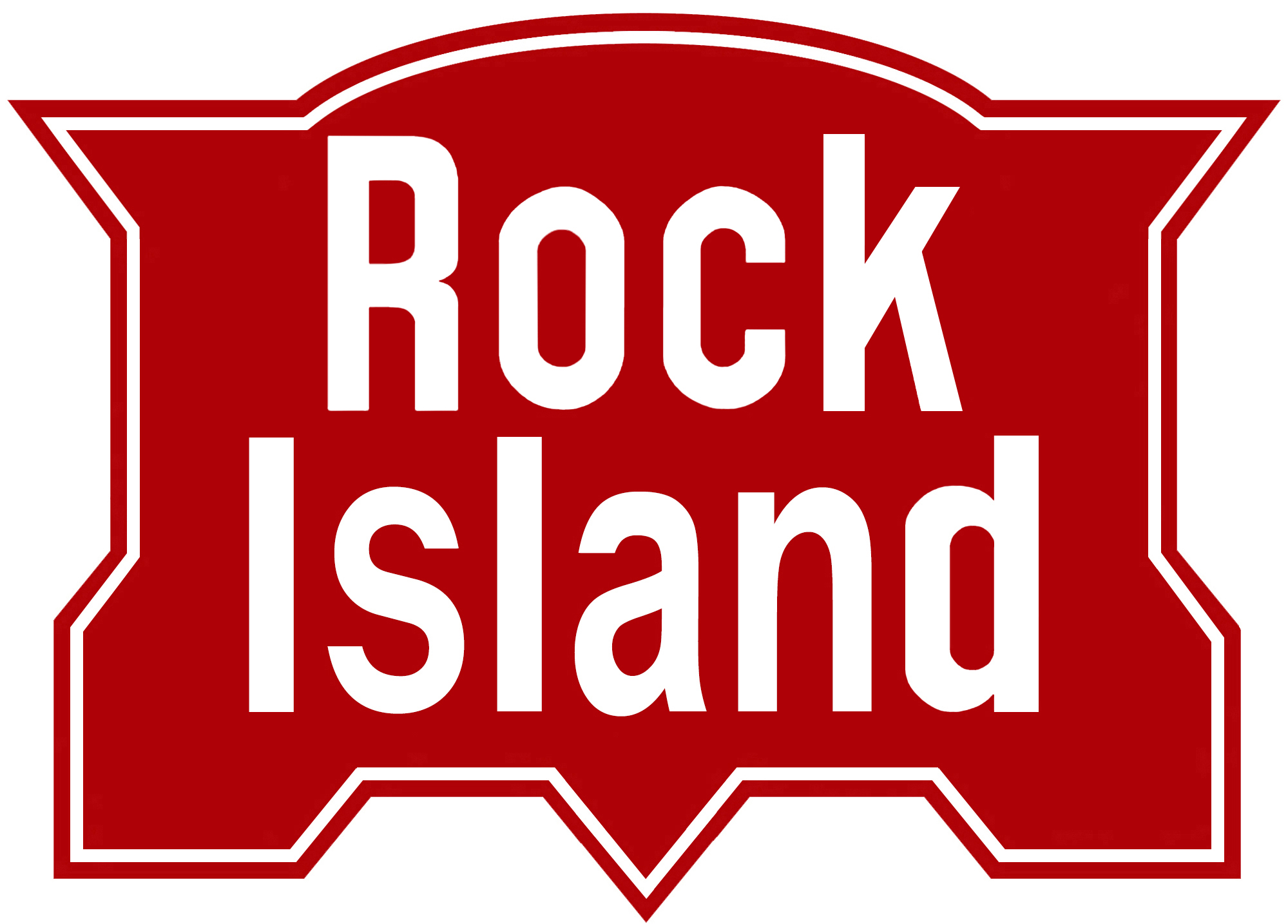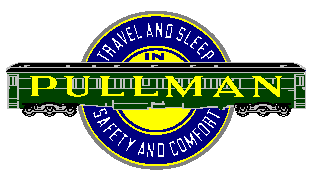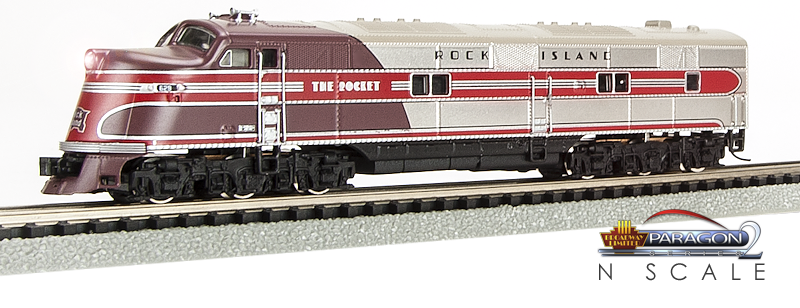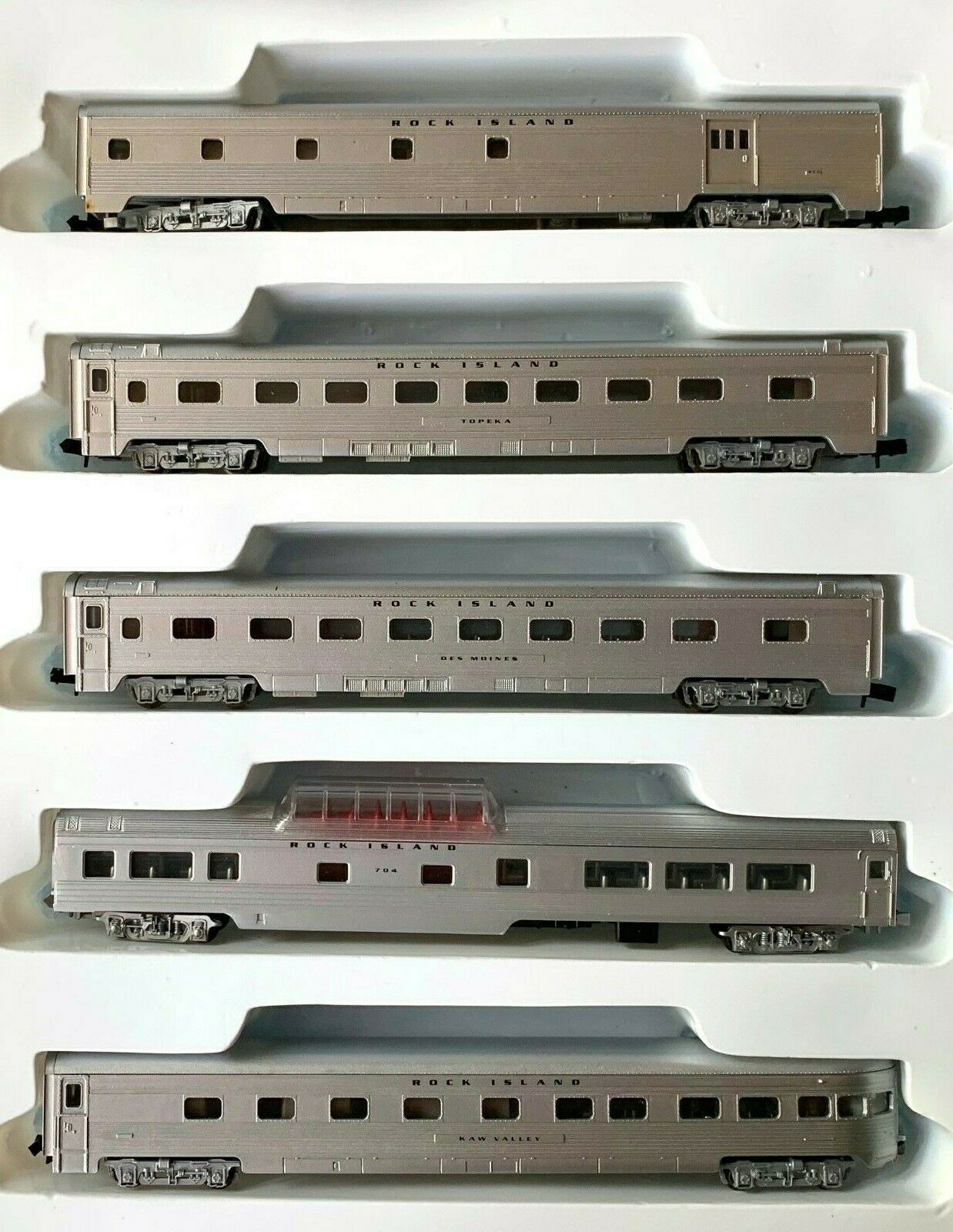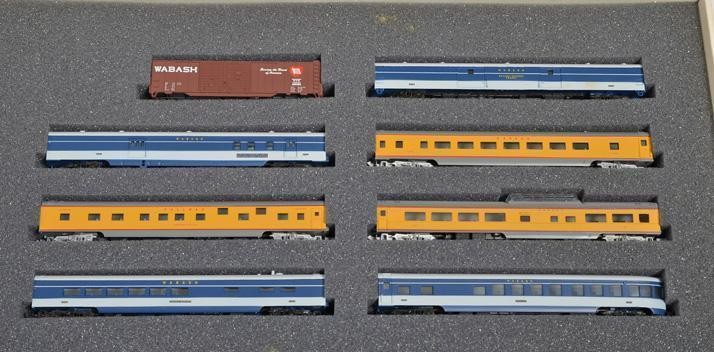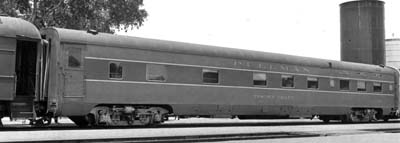Prototype History: As lightweight articulated streamliners were proving their reliability and economy on the Union Pacific and Burlington route, Santa Fe made its' first investment in modern equipment with an order to Budd for a stainless steel coach numbered 3070 delivered in January of 1936. The car would be built with the patented Shotweld process that produced a full size car with a great savings in weight over the standard riveted cars (83,000 vs. 160,000 lbs.) The shiny fluted sides gave a pleasant appearance to the car and were easy to maintain. Santa Fe's second lightweight car, 3071, built at St. Louis Car Co. from welded Corten steel came in at 98,00 lbs., a great weight savings but not enough to sway Santa Fe from placing orders for 103 cars with Budd for eight new streamline train sets: a new Super Chief, San Diegan, Tulsan and twin sets for El Capitan, Golden Gate and Chicagoan-KansasCitian. A second Super Chief was also added. 47 more cars were ordered for delivery 1940-1942
119 6 Sec-6 Rmt-4 DB cars were built under Lot #6669 to Plan 4099 and delivered in June of 1942. Except for exterior paint and air conditioning systems the cars were identical and assigned to the Missouri Pacific (4), Erie (4), Illinois Central (12), Overland Route (60), Golden State (13) Santa Fe (26). These were the first smooth side streamline sleepers on the Santa Fe. These cars were to be used to provide new sleeping cars for secondary trains Grand Canyon and Ranger. Painted in the new Pullman two-tone gray scheme these cars were pressed into service during the war on the previously all-stainless steel sided Chief.
119 6 Sec-6 Rmt-4 DB cars were built under Lot #6669 to Plan 4099 and delivered in June of 1942. Except for exterior paint and air conditioning systems the cars were identical and assigned to the Missouri Pacific (4), Erie (4), Illinois Central (12), Overland Route (60), Golden State (13) Santa Fe (26). These were the first smooth side streamline sleepers on the Santa Fe. These cars were to be used to provide new sleeping cars for secondary trains Grand Canyon and Ranger. Painted in the new Pullman two-tone gray scheme these cars were pressed into service during the war on the previously all-stainless steel sided Chief.
Road Name History: The Chicago, Rock Island and Pacific Railroad (CRI&P RR) (reporting marks RI, ROCK) was a Class I railroad in the United States. It was better known as the Rock Island Line, or, in its final years, The Rock. At the end of 1970 it operated 7183 miles of road on 10669 miles of track; that year it reported 20557 million ton-miles of revenue freight and 118 million passenger-miles. (Those totals may or may not include the former Burlington-Rock Island Railroad.)
Its predecessor, the Rock Island and La Salle Railroad Company, was incorporated in Illinois on February 27, 1847, and an amended charter was approved on February 7, 1851, as the Chicago and Rock Island Railroad. Construction began October 1, 1851, in Chicago, and the first train was operated on October 10, 1852, between Chicago and Joliet. Construction continued on through La Salle, and Rock Island was reached on February 22, 1854, becoming the first railroad to connect Chicago with the Mississippi River.
In 1980 Rock Island was liquidated. The railroad's locomotives, rail cars, equipment, tracks, and real estate were sold to other railroads or to scrappers. William Gibbons (the trustee) was able to raise more than $500 million in the liquidation, paying off all the railroad's creditors, bondholders and all other debts in full at face value with interest. Henry Crown was ultimately proven correct, as both he and other bondholders who had purchased Rock Island debt for cents on the dollar during the low ebb in prices did especially well.
Read more on Wikipedia and Rock Island Technical Society.
Its predecessor, the Rock Island and La Salle Railroad Company, was incorporated in Illinois on February 27, 1847, and an amended charter was approved on February 7, 1851, as the Chicago and Rock Island Railroad. Construction began October 1, 1851, in Chicago, and the first train was operated on October 10, 1852, between Chicago and Joliet. Construction continued on through La Salle, and Rock Island was reached on February 22, 1854, becoming the first railroad to connect Chicago with the Mississippi River.
In 1980 Rock Island was liquidated. The railroad's locomotives, rail cars, equipment, tracks, and real estate were sold to other railroads or to scrappers. William Gibbons (the trustee) was able to raise more than $500 million in the liquidation, paying off all the railroad's creditors, bondholders and all other debts in full at face value with interest. Henry Crown was ultimately proven correct, as both he and other bondholders who had purchased Rock Island debt for cents on the dollar during the low ebb in prices did especially well.
Read more on Wikipedia and Rock Island Technical Society.
Brand/Importer Information: Centralia Car Shops is an N-Scale manufacturer based in Des Plaines Illinois. It is a wholly owned subsidiary of Des Plaines hobbies. Des Plaines Hobbies was founded by Ron Sebastian in 1984. Centralia subcontracts its manufacturing to InterMountain and 'piggy-backs' the production runs onto the InterMountain runs using the same factories in China as InterMountain. Shipping from factories in China is also coordinated with InterMountain as is distribution to retailers.
Des Plaines Hobbies is a old fashioned hobbyshop with an emphasis on Model Railroading. It was started 33 years ago when you could purchase a tube of glue and sticks of balsa wood. That is still true today, although we have added a few items. About 20 years ago we ventured into some light manufacturing and are also home to Centralia Car Shops, S Scale America, and O Scale America lines of kits, decals and parts. Also along the way we have purchased a few small lines that we still offer such as Microscale's S Scale decal line and Mullet River Model Works HO and S lines.
Des Plaines Hobbies is located 3 1/2 miles north of O Hare International Airport at 1524 Lee/Mannheim (US 12-45). Pace buses conveniently run north and south on Lee/Mannheim from O Hare and the Des Plaines Metra station (1 mile north). For drivers, there is parking for a couple hundred cars out front and on the right side of the store. We are located on the south side of the Jewel food store under the red awning. Come for a visit. ADA restroom available. Coffee is usually hot, if not, ask and we will put a pot on.
Des Plaines Hobbies is a old fashioned hobbyshop with an emphasis on Model Railroading. It was started 33 years ago when you could purchase a tube of glue and sticks of balsa wood. That is still true today, although we have added a few items. About 20 years ago we ventured into some light manufacturing and are also home to Centralia Car Shops, S Scale America, and O Scale America lines of kits, decals and parts. Also along the way we have purchased a few small lines that we still offer such as Microscale's S Scale decal line and Mullet River Model Works HO and S lines.
Des Plaines Hobbies is located 3 1/2 miles north of O Hare International Airport at 1524 Lee/Mannheim (US 12-45). Pace buses conveniently run north and south on Lee/Mannheim from O Hare and the Des Plaines Metra station (1 mile north). For drivers, there is parking for a couple hundred cars out front and on the right side of the store. We are located on the south side of the Jewel food store under the red awning. Come for a visit. ADA restroom available. Coffee is usually hot, if not, ask and we will put a pot on.
Item created by: gdm on 2017-10-16 19:39:53
Last edited by: gdm on 2020-05-14 19:42:18
If you see errors or missing data in this entry, please feel free to log in and edit it. Anyone with a Gmail account can log in instantly.
Last edited by: gdm on 2020-05-14 19:42:18
If you see errors or missing data in this entry, please feel free to log in and edit it. Anyone with a Gmail account can log in instantly.




